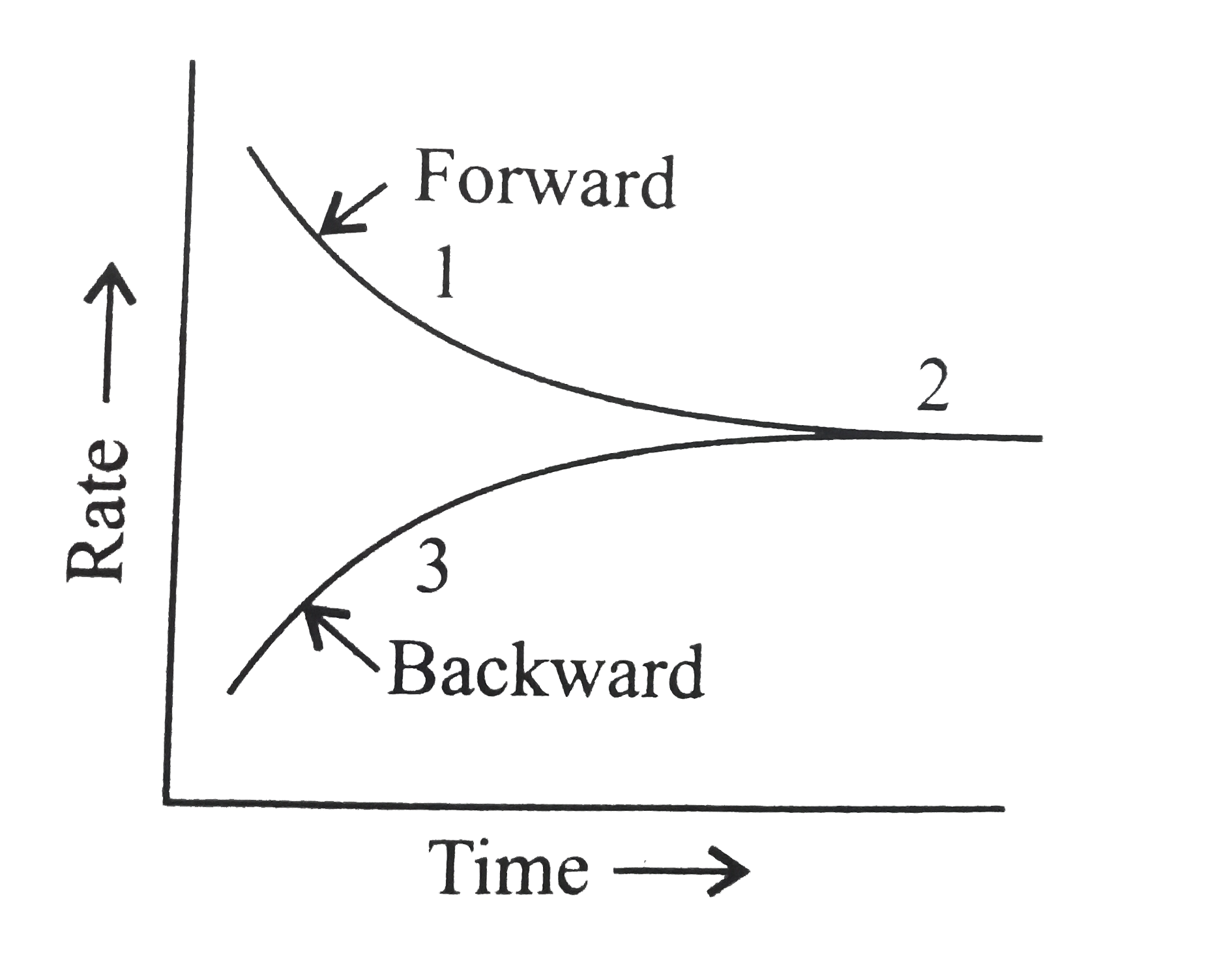For a reaction 2A(g)⇔B(g)Qc>K if 'A' is added maintaining Qc>K, the reaction will move in backward direction.
The correct Answer is:True
Topper's Solved these Questions
- BOOK - CBSE COMPLEMENTARY MATERIALCHAPTER - EQUILIBRIUM EXERCISE - FILL IN THE BLANKS10videos
EQUILIBRIUM
- BOOK - CBSE COMPLEMENTARY MATERIALCHAPTER - EQUILIBRIUM EXERCISE - MATCH THE COLUMNS2videos
EQUILIBRIUM
- BOOK - CBSE COMPLEMENTARY MATERIALCHAPTER - EQUILIBRIUM EXERCISE - UNIT TEST6videos
EQUILIBRIUM
- BOOK - CBSE COMPLEMENTARY MATERIALCHAPTER - ENVIRONMENTAL CHEMISTRYEXERCISE - UNIT TEST9videos
ENVIRONMENTAL CHEMISTRY
- BOOK - CBSE COMPLEMENTARY MATERIALCHAPTER - HYDROCARBONSEXERCISE - UNIT TEST16videos
HYDROCARBONS
Similar Questions
Mass action rato or reaction quotient Q for a reaction can be calculate using the law of masss action
A(g)+B(g)⇔C(g)+D(g)
Q=[C][D][A][B]
The value of Q decides whether the reaction is at equilibrium or not.
At equilibrium, Q=K
For an equilibrium process, Q≠K
when Q>K, reaction will favour backward direction and when Q<K, it will favour direction.
Answer the following questions:
In the reaction:
NH4Cl(g)⇔NH3(g)+HCl(g)
a graph is plotted to show that the variation or the rate of forward and backward reaction against time.
Which of following is correct?
 View Solution
View SolutionMass action rato or reaction quotient Q for a reaction can be calculate using the law of masss action
A(g)+B(g)⇔C(g)+D(g)
Q=[C][D][A][B]
The value of Q decides whether the reaction is at equilibrium or not.
At equilibrium, Q=K
For an equilibrium process, Q≠K
when Q>K, reaction will favour backward direction and when Q<K, it will favour direction.
Answer the following questions:
The reaction quotient Q for:
O2(g)+2H2(g)⇔2H2O(g)
is given by Q=[H2O]2[O2][H2]2. The reaction will proceed in backward direction, whenView Solution
Knowledge Check
- Question 1 - Select One
For the reactions
A⇔B,Kc=1
B⇔C,Kc=2
C⇔D,Kc=3
Kc for the reaction A⇔D isA5B6C15D1 - Question 2 - Select One
Mass action rato or reaction quotient Q for a reaction can be calculate using the law of masss action
A(g)+B(g)⇔C(g)+D(g)
Q=[C][D][A][B]
The value of Q decides whether the reaction is at equilibrium or not.
At equilibrium, Q=K
For an equilibrium process, Q≠K
when Q>K, reaction will favour backward direction and when Q<K, it will favour direction.
Answer the following questions:
In the reaction:
NH4Cl(g)⇔NH3(g)+HCl(g)
a graph is plotted to show that the variation or the rate of forward and backward reaction against time.
Which of following is correct?
 AQ>K=3,Q=K=2,Q<K=1BQ>K=2,Q=K=3,Q<K=1CQ>K=1,Q=K=2,Q<K=3DQ>K=2,Q=K=1,Q<K=3
AQ>K=3,Q=K=2,Q<K=1BQ>K=2,Q=K=3,Q<K=1CQ>K=1,Q=K=2,Q<K=3DQ>K=2,Q=K=1,Q<K=3 - Question 3 - Select One
Mass action rato or reaction quotient Q for a reaction can be calculate using the law of masss action
A(g)+B(g)⇔C(g)+D(g)
Q=[C][D][A][B]
The value of Q decides whether the reaction is at equilibrium or not.
At equilibrium, Q=K
For an equilibrium process, Q≠K
when Q>K, reaction will favour backward direction and when Q<K, it will favour direction.
Answer the following questions:
The reaction quotient Q for:
O2(g)+2H2(g)⇔2H2O(g)
is given by Q=[H2O]2[O2][H2]2. The reaction will proceed in backward direction, whenAQ=KcBQ<KcCQ>KcDQ=0
For a reaction if Kp>Kc , the forward reaction is favoured by (T>15K)
View SolutionFor reaction, 2A(g)⇔3C(g)+D(s), the value of Kc will be equal to
View SolutionFor the reaction CO(g)+Cl2(g)↔COCl2(g) KpKc equal to
View SolutionFor the reaction , CO(g)+Cl(g)⇔COCl2(g) then Kp/Kc is equal to :
View SolutionFor a reaction if Kp>Kc , the forward reaction is favoured by (T>15K)
View Solution

